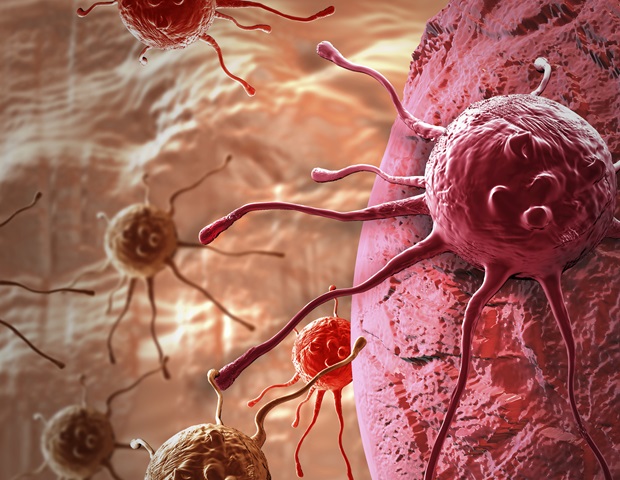
Researchers from Tokyo Metropolitan College have developed a brand new dye that may strongly take up second near-IR radiation and rework it to warmth. Beginning with a dye from the bile pigment household, they designed a novel ring construction which might bind rhodium and iridium. Measurements and modeling revealed robust second near-IR absorptions and distinctive photostability. Second near-IR waves simply penetrate human tissue; the brand new dye could also be utilized in deep tissue therapies and imaging.
The second near-IR area of the electromagnetic spectrum (1000-1700 nanometers) is a probably essential wavelength vary for medical science. On this vary, gentle shouldn’t be as strongly scattered or absorbed by organic tissue. This transparency makes it ideally suited for delivering vitality into deeper components of the physique, whether or not for imaging or remedies. An essential instance of such a remedy is photoacoustic imaging in most cancers prognosis and remedy. When a distinction agent injected into the physique is hit with gentle, it emits warmth which creates tiny ultrasonic shocks which might both be detected for imaging, or itself used to wreck cancerous cells.
The efficacy of this strategy hinges on the provision of secure distinction brokers which might effectively take up gentle at these wavelengths. The vast majority of distinction brokers, nonetheless, are extra delicate within the first near-IR vary (700 – 1000 nanometers), the place scattering results are stronger, and vitality supply is much less environment friendly.
Now, a group of researchers led by Affiliate Professor Masatoshi Ichida from Tokyo Metropolitan College have developed a brand new chemical compound which overcomes this Achilles’ heel. Beginning with a dye from the bile pigment household referred to as bilatriene, they utilized a way often known as N-confusion chemistry to switch the ring construction of bilatriene to simply accept the binding of steel ions. Of their most up-to-date work, they efficiently integrated rhodium and indium ions onto the ring through nitrogen atoms.
The group’s new dye confirmed its strongest gentle absorption at a wavelength of 1600 nanometers below regular situations, which is effectively contained in the second near-IR area. It was additionally proven to be very photostable, that means that it will not break aside simply on publicity to gentle. Detailed measurements of how the molecule responds to magnetic fields, and numerical calculations utilizing density useful principle (DFT) each confirmed how the distinctive distribution of electrons in a cloud encompassing the entire, intricate construction of the metal-binding molecule (often known as a pi-radicaloid) gave rise to absorbances which aren’t potential in present, comparable compounds.
For the reason that second near-IR shouldn’t be as strongly absorbed by tissues, areas sensitized with the dye could also be uncovered extra strongly to gentle, permitting for clearer imaging and higher supply of warmth for therapies. The group hopes their molecule will open the door to new approaches to deep tissue medication, in addition to extra normal purposes to chemical catalysis.
This work was supported by JSPS Grant Numbers JP20H00406 and JP22K19937, JST PRESTO Grant Quantity JPMJPR2103, the Izumi Science and Expertise Basis, Superior Analysis Infrastructure for Supplies and Nanotechnology in Japan (ARIM) of the Ministry of Training, Tradition, Sports activities, Science and Expertise (MEXT) below proposal Quantity JPMXP1222MS1802, the Cooperative Analysis Program of NJRC Mater. & Dev., and a Tokyo International Companion fellowship from Tokyo Metropolitan College.
Supply:
Journal reference:
Ghosh, A., et al. (2024). Steel‐Bridging Cyclic Bilatriene Analogue Affords Secure π‐Radicaloid Dyes with Close to‐Infrared II Absorption. Angewandte Chemie Worldwide Version. doi.org/10.1002/anie.202418751.

